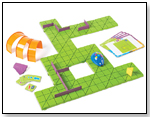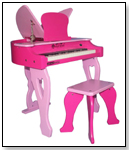|
|
6 Retail Pricing Mistakes to Avoid Retail pricing mistakes happen when the customer is charged the wrong price. You need to charge a price you can make a profit on. Of course, this means that a retailer must be extremely aware of their pricing strategy to ensure that their pricing is done accurately and in a timely manner. Failure in this seemingly simple matter can lead to all sorts of problems, from unintended “loss leaders” that sap profits, to confused customers who become indignant if a wrong price cannot be honored. Here are six pricing mistakes that retailers should avoid: 1. Phony savings A recent story about JC Penney illustrates one of the top pricing mistakes for retailers: placing price tags that are higher on top of originally tagged items that were lower. Nothing makes customers madder than peeling back a price tag, in this instance, a men’s short sleeve shirt on sale for $13.99 marked down from $20 with an original price tag under showing it originally sold for $10. Outfit your price-changers with a razor blade if necessary to scrape all of the other prices away – no one wants to emulate J.C. Penney. 2. Mispricing While a POS system will charge the correct price when scanned, the customer will demand the posted price on a mismarked item. Customer service (and sometimes, state law) demands that you comply but your staff has to be trained to correct this situation immediately on the entire inventory of the item still in the store. If they don’t, you risk losing your profit margin on every one of those items sold. Likewise, an item that is correct in the POS system, but holds a higher price on the shelf could cripple your turn of that line. The fix? Always have someone spot-check. 3. Markup Errors Figuring the markup on a product is not particularly difficult, especially since every smartphone has a calculator. Finding someone to do it responsibly and correctly is another story. Over- and underpricing occurs if the storeowner or manager does not figure out the correct selling price when they order the item. 4. Magnified Perception of Worth Sometimes you get a great deal on a line and you aggressively mark it up. It pays however, in both inventory turnover and gross margin, to charge a price similar to that of comparable products from other vendors. There’s usually a reason you got a great price on something – your vendor knows something you have yet to discover – it doesn’t sell. 5. Under Perception of Worth Pricing an item under keystone because it won’t move at the price it should be marked to deflates the hope you’ll be profitable on the product. You did the work in finding the product, paying to ship it there, and showcasing it in your rented retail space; you should also reap the reward. Pricing too low means when you have to put the item on clearance, you are paying customers to take it away. 6. Failure to Stay Current Sheer laziness accounts for many of the mistkaes that occur with pricing merchandise. Don’t let it stop you from checking your current costs at the vendor level and updating your prices on reorders as necessary. Otherwise, you may end up discounting yourself out of the market by undercutting your profit margin. Wrong pricing is one of the most common (and often hidden) mistakes that can cripple a retailer.  Writer's Bio: Bob Phibbs is the Retail Doctor®, a best-selling author and speaker who has helped thousands of independent businesses compete. His new book, The Retail Doctor’s Guide to Growing Your Business has received praise from both Inc. magazine and USA Today and can be found at your local bookstore or ordered at http://www.retaildoc.com/guide. He and his work have been featured in the New York Times, the Wall Street Journal and Entrepreneur magazine. Questions? Contact Bob at info@retaildoc.com. This article was reprinted with permission of the author, Bob Phibbs, aka The Retail Doctor®. Read more articles by this author Writer's Bio: Bob Phibbs is the Retail Doctor®, a best-selling author and speaker who has helped thousands of independent businesses compete. His new book, The Retail Doctor’s Guide to Growing Your Business has received praise from both Inc. magazine and USA Today and can be found at your local bookstore or ordered at http://www.retaildoc.com/guide. He and his work have been featured in the New York Times, the Wall Street Journal and Entrepreneur magazine. Questions? Contact Bob at info@retaildoc.com. This article was reprinted with permission of the author, Bob Phibbs, aka The Retail Doctor®. Read more articles by this author |
| ||||||||||||||||||||||||||||||||
Disclaimer Privacy Policy Career Opportunities
Use of this site constitutes acceptance of our Terms of Use.
© Copyright 2025 PlayZak®, a division of ToyDirectory.com®, Inc.



